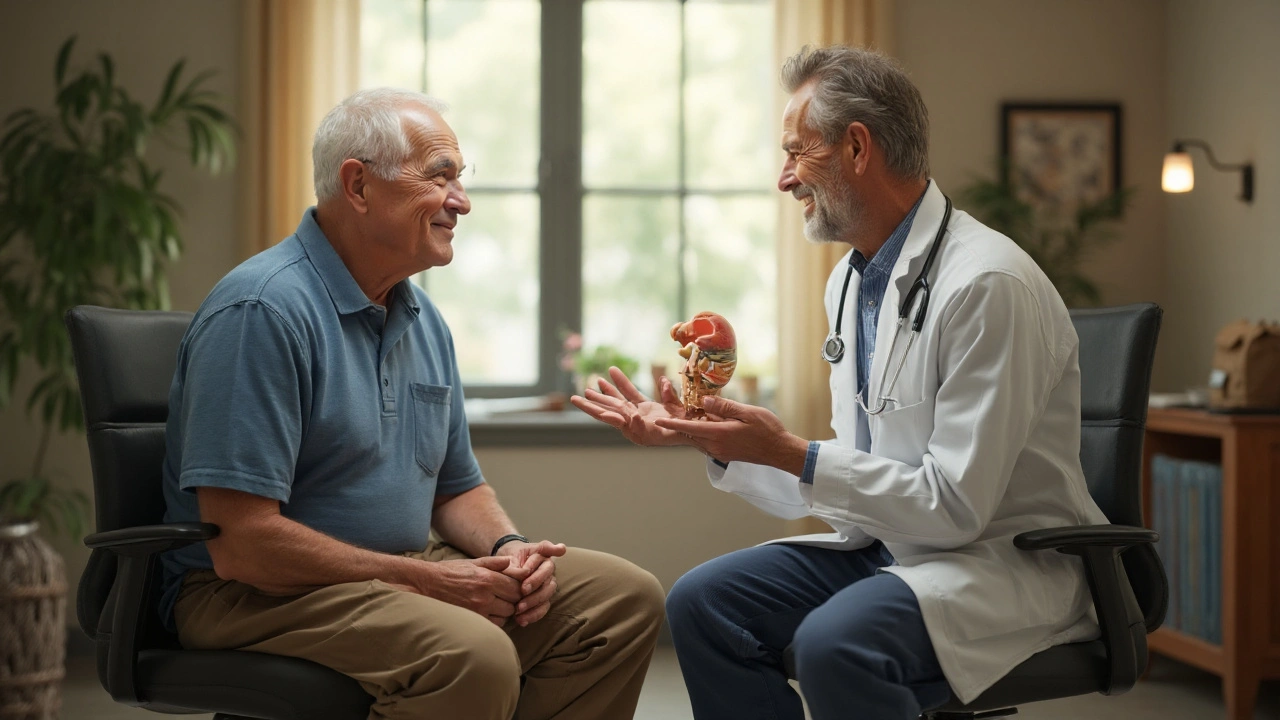BPH Symptoms – Quick Guide for Men
Benign prostatic hyperplasia (BPH) is a common cause of urinary trouble in men over 40. The prostate grows slowly and can press on the urethra, the tube that carries urine out of the bladder. When that happens, you start to notice changes in how you pee. Knowing the signs early can save you from discomfort and help you decide when to get medical advice.
Here are the most frequent BPH symptoms you might experience:
- Needing to go to the bathroom more often, especially at night (nocturia).
- Feeling an urgent need to pee that’s hard to control.
- A weak or interrupted urine stream.
- Struggling to start urination or having a long delay before the stream begins.
- Feeling like your bladder isn’t empty after you finish.
- Dribbling a few drops after you think you’re done.
- Occasional sudden inability to pee (urinary retention).
These signs can range from mildly annoying to seriously disruptive. If you notice any of them, it’s worth paying attention.
Why These Symptoms Appear
The prostate sits right below the bladder. As it enlarges, it squeezes the urethra, making it harder for urine to flow. This pressure also interferes with the bladder’s ability to contract fully, so you may feel that lingering “still full” sensation.
Hormonal shifts, especially reduced testosterone and increased estrogen as men age, help fuel the growth. Lifestyle factors like a high‑fat diet, lack of exercise, and chronic inflammation can also speed up the process.
Because the bladder tries to compensate, you might end up urinating more often or waking up several times a night. Over time, the bladder muscles can get weaker, leading to a weaker stream and incomplete emptying.
When to See a Doctor and Easy Self‑Care Tips
If you have any of the symptoms above for more than a few weeks, or if you notice blood in the urine, pain, or a sudden inability to pee, schedule a check‑up. A quick exam, a urine test, and possibly an ultrasound can confirm whether BPH is the cause.
In the meantime, a few simple habits can ease the bother:
- Limit caffeine and alcohol, especially in the evening—they can irritate the bladder.
- Drink enough water during the day but cut back a few hours before bedtime to reduce nocturia.
- Practice “double voiding”: finish urinating, wait a few seconds, then try again to empty the bladder more completely.
- Stay active. Walking or light cardio helps keep hormones balanced and improves blood flow to the prostate.
- Try timed bathroom trips – go every 3‑4 hours even if you don’t feel the urge, which trains the bladder to hold more urine.
If lifestyle tweaks aren’t enough, doctors often start with medications that relax the prostate muscle (alpha‑blockers) or shrink the gland (5‑alpha‑reductase inhibitors). Surgery is rare but available for severe cases.
Bottom line: BPH symptoms are common, but they don’t have to control your life. Spotting the signs early, making a few day‑to‑day changes, and talking to a healthcare professional can keep things running smoothly.
How Prostate Massage Helps Relieve BPH Symptoms: Benefits, Risks & Evidence
Explore how prostate massage can ease BPH symptoms, its mechanisms, clinical evidence, safety tips, and how it compares with standard treatments.
